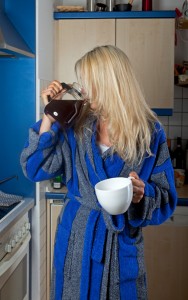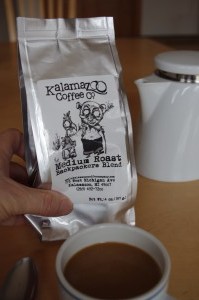Starbucks does the Unthinkable: Blonde Roast
Starbucks has happily shocked a lot of us by introducing a new light roast. Like anything they do, it is accompanied by media hype. Frankly, I’m happy to see them benefit from doing the right thing. I’m happy that the coffee will taste better, which I think it will because they are capable. I wanted to get my genuine positive points out first, both because it is appropriate and because it’s the right decision and it will taste better. What it is not is good marketing, which may surprise a lot of people.This was heightened for me reading a sound byte by Robert Passikoff of Brand Keys, a New York City (marketing?) consulting firm. He said, “”It’s just good marketing. If virtually half the people say that the more European, heavier-tasting coffee is not to their liking, why not (do it)?” I could take Mr Passikoff to task for calling it more European – not, the Starbucks roast originated in San Francisco (and Alfred Peet). But, what makes me bristle more is calling it marketing. It might be paying attention to consumer trends but that is not marketing.
Good marketing is leading. Roasters such as George Howell, Oren’s Daily Roast, Counter Culture and Intelligentsia are light roast’s marketing champs. They forged ahead when angel investment groups would have looked cross-eyed that any small-time coffee guys were bucking the Starbucks “secret sauce”, the black roasted product with umami (savoriness). Starbucks marketing was so good so early and it convinced people that overroasted coffee was a virtue, that the only reason it was light roasted was to save weight loss during roasting. Still, sometimes people unchurched in the nomenclature of the coffee industry would simply say Starbucks was too strong, and this was even true among some specialty coffee folks.
Coffee strength alone was never the real problem with Starbucks, although it might seem like it at first glance. Many years ago, after Starbucks first came to rule the Evil Empire of consumer coffee, they attempted briefly to follow the Specialty Coffee Association’s hefty brewing formulas. Consumers collectively gagged and, again in a response to consumers, Starbucks hastily backed off in the brew basket. They made it less strong, but it might be argued that consumers were less in angst about the strength than that they were really tasting the stuff for the first time under the full-strength taste spotlight. The reality and the the real problem was roast. Starbucks came out a while back with a Pikes Roast, which attempted to bring their roast up a few notches lighter. It goes to show just how dark was Starbucks roasting that some, including me, were unable to appreciate Pikes as anything approaching a light roast.
The coffee business likes to pat itself on the back for marketing. It’s as if it doesn’t really believe in its product and are privately saying, “Can you believe people actually like this stuff”? There are two areas where the market (not to say “marketing”) has gone and in both these directions, Starbucks is a follower. So-called slow brew methods, such as Chemex, Hario and other drip techniques have replaced espresso with coffee aficionados. Truthfully, Starbucks never sold espresso anyway but café lattes. Slow brew means filtered coffee, which is really the specialty coffee world’s “special sauce”. Not only is Starbucks burning off the most prized flavors in their roast. They finish it off using an espresso machine. Espresso was invented as a socialist experiment to shorten the Italian coffee break and to bring forth flavors from some of the world’s least costly coffees, not exactly in lock step with the flavor seduction a Chemex can achieve with high-end beans.
Lately, espresso has become the proletariat drink and single-origin slow-brew drip the beverage choice of the literati. Witness Oliver Strand’s precious New York Times columns. Slow brew drip using some single family farm’s beans is cool. This movement was started by high-end consumers, independent farmers who learned to market their coffees using direct trade and, lastly, those high-end coffee guys previously named who stuck it out after Starbucks had attacked them and taken a good portion of their market share. Now consumers flock to them and places like Grumpys, Blue Bottle, Stumptown, all delivering a much lighter roast, and most highlighting the virtues of a small personal pot of coffee brewed per guest or couple.
Meanwhile, Starbucks has done a great job creating community centers. They are modern suburbia’s equivalent of Target, with the same uniformity. They can rightfully claim to have invented or at least won in this competition. The new roast is different. It will allow consumers to have it their way, which is a lighter way. I wish Starbucks well in joining them with the Blonde roast. It might be considered flexible and a smart response. But, it was not a marketing coup.
©2011 Kevin Sinnott All rights reserved.




